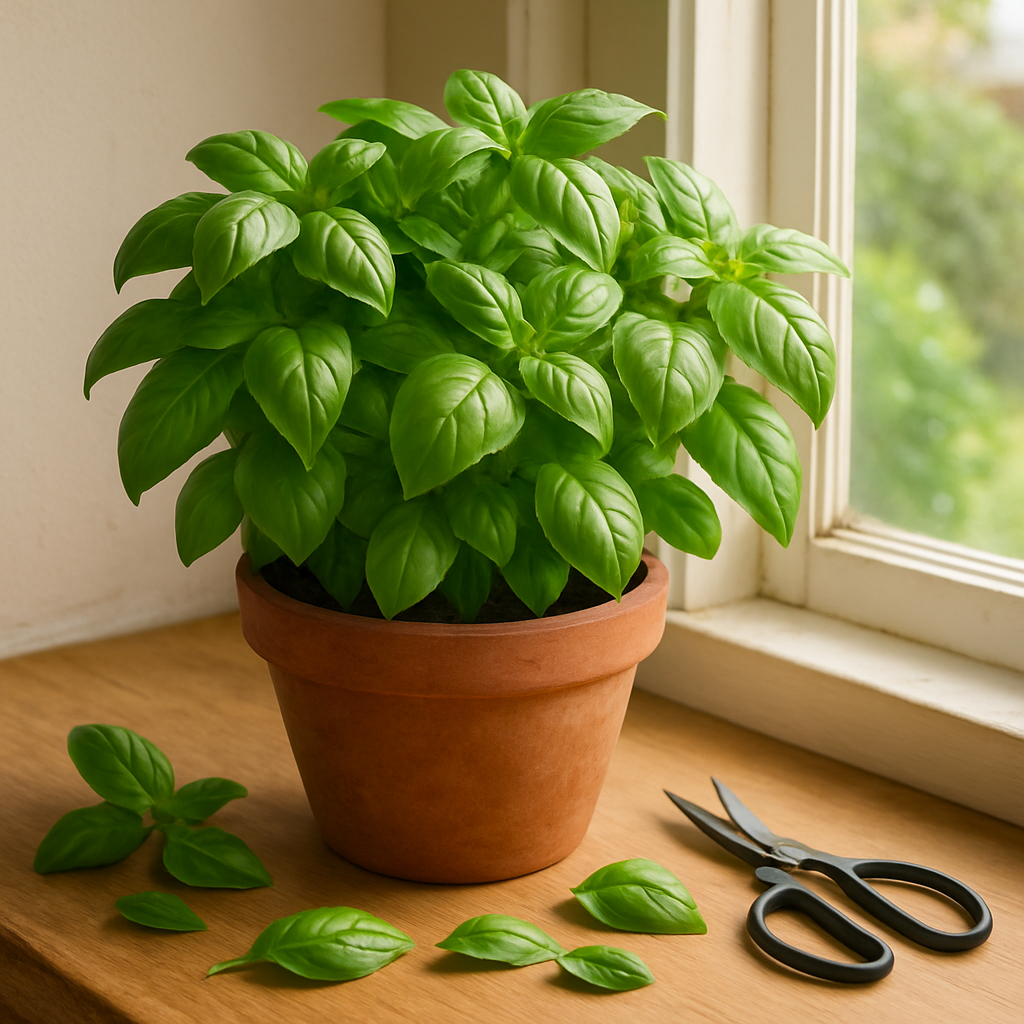Introduction to Pruning Basil
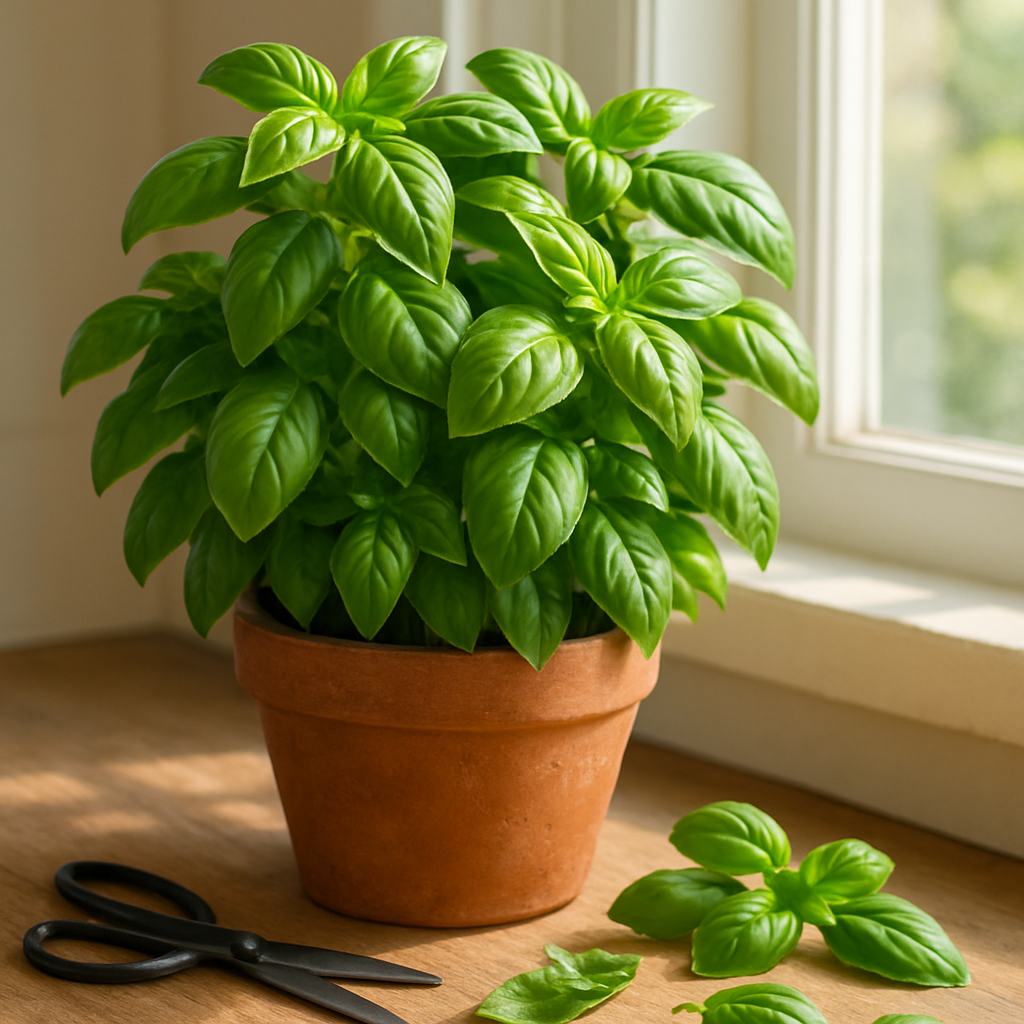
If you’ve ever wondered how to prune basil, you’re not alone—this simple gardening technique is the secret behind lush, bushy basil plants that keep your kitchen stocked with fresh leaves all season long. For home gardeners, learning how to prune basil can be the difference between a leggy, sparse plant and a thriving herb that produces handfuls of flavorful leaves week after week.
Pruning isn’t just about snipping off a few leaves for tonight’s pasta; when done right, it encourages the plant to grow denser and produce more, actually increasing your harvest over time. Plus, regular trimming prevents basil from bolting or going to seed too early, which means your plants stay productive for months.
Even if you’re a beginner, there’s no need to feel intimidated—pruning basil is straightforward and incredibly rewarding. All you need is a clean pair of scissors or gardening snips and a few quick tips. With just a little effort, you’ll see new shoots popping up where you made cuts, a clear sign your basil is growing bushier and healthier.
Soon, you’ll be able to pick leaves for salads, sauces, and sandwiches right from your garden whenever you need them.
Why Pruning Basil Promotes Bushier Growth
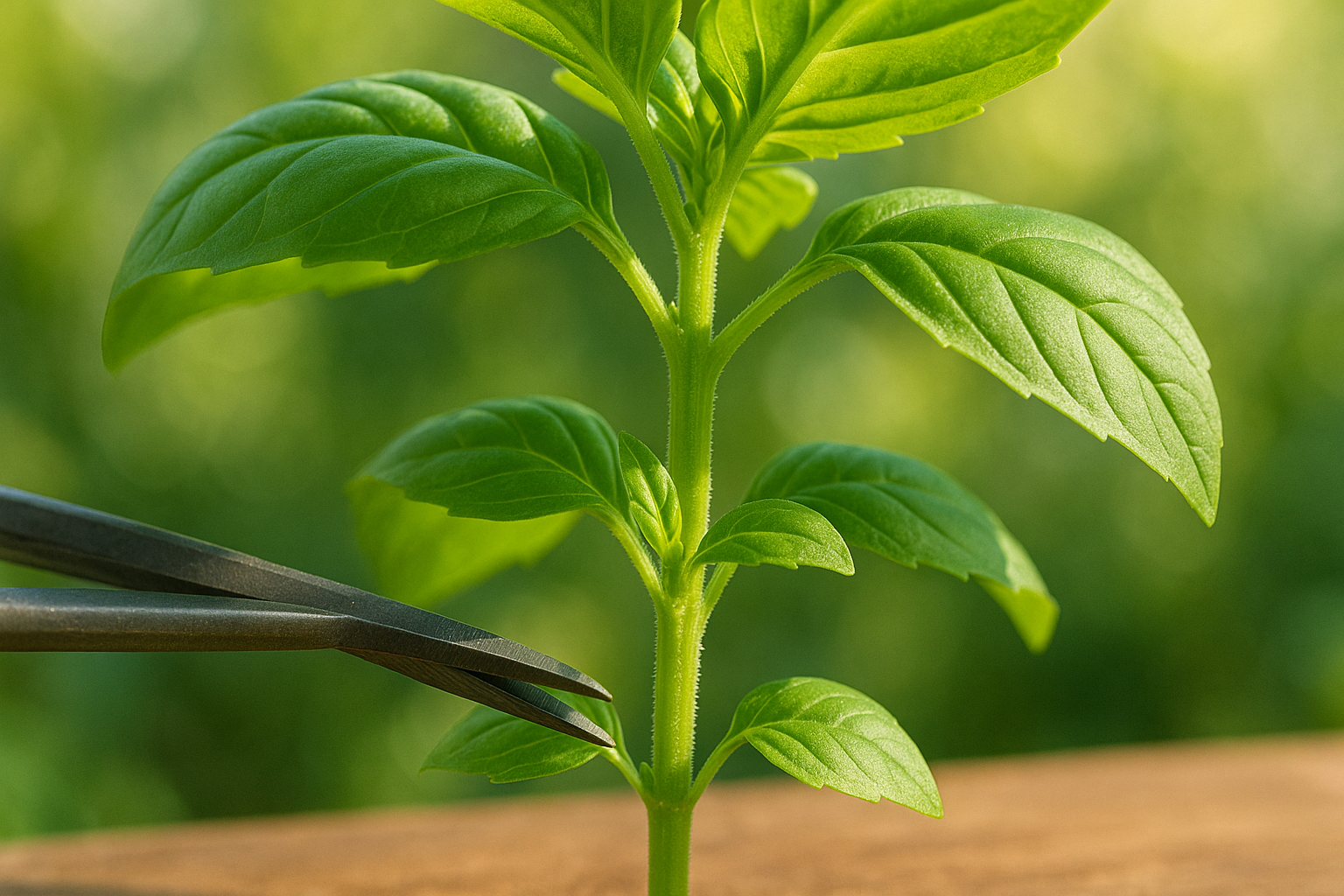
Pruning basil isn’t just about tidying up your herb garden—it’s the secret to growing lush, bushy plants instead of tall, skinny ones. When you snip off the top set of leaves just above a pair of leaf nodes, you trigger the plant’s natural response to grow side shoots from the nodes below the cut.
This happens because pruning removes the apical dominance—the hormone-driven urge the plant has to grow upward toward light—so energy shifts from the main stem to encourage new, lateral stems. Over time, regular pinching or cutting creates a compact, fuller basil plant with many more flavorful leaves.
In contrast, basil that’s left unpruned often becomes “leggy,” prioritizing height over fullness. It stretches up quickly, with fewer leaves and weak stems, making it less productive and more susceptible to wind damage.
Another common mistake is letting basil flower or bolt. Once flowering starts, the plant redirects its resources from growing tasty leaves to producing seeds, resulting in smaller, tougher, and sometimes bitter leaves. Allowing basil to grow too tall without pruning leads to the same problem: a plant that looks impressive in height but yields little in harvest and quickly declines in quality.
The best tip is to harvest often and don’t be afraid to pinch back young plants early—even just a couple of inches below the top. You’ll be rewarded with a continuous supply of fresh basil and a much more attractive, healthy plant all season long.
When Is the Best Time to Start Pruning Basil?
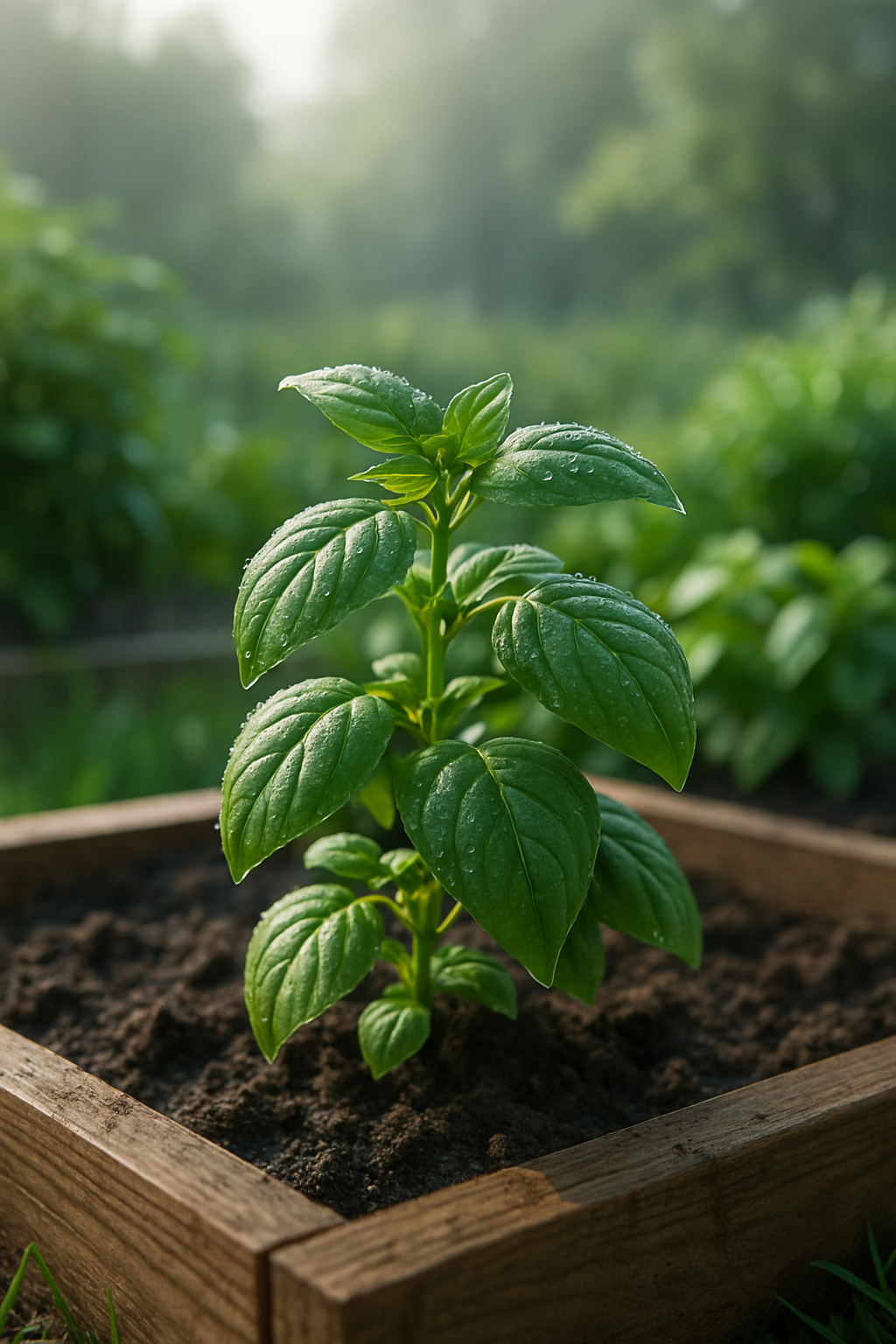
The ideal time to start pruning basil is when your plant reaches about 6 to 8 inches in height or has at least six sets of leaves. This usually happens a few weeks after transplanting or starting seeds, depending on growing conditions. Pruning at this stage encourages the plant to grow bushier instead of tall and leggy.
For best results, prune basil in the morning when the plant’s oils are most concentrated and the leaves are crisp, making them less prone to wilting. Avoid pruning during the heat of the day, as this can stress the plant.
As the season progresses, plan to trim basil every one to two weeks or whenever you notice new sets of leaves forming below previous pruning cuts. A good rule of thumb is to wait until there are two fresh pairs of leaves below each cut before pruning again; this helps maintain a healthy, productive plant.
Keep an eye out for tall central stems, flower buds forming, or leaves getting crowded—these are signs your basil is ready for another trim. Regular, mindful pruning not only keeps your basil lush and flavorful but also prevents flowering, which can make the leaves taste bitter.
Remember, the more you prune (within reason), the more you’ll be rewarded with fragrant leaves all season long.
How to Prune Basil for Maximum Growth
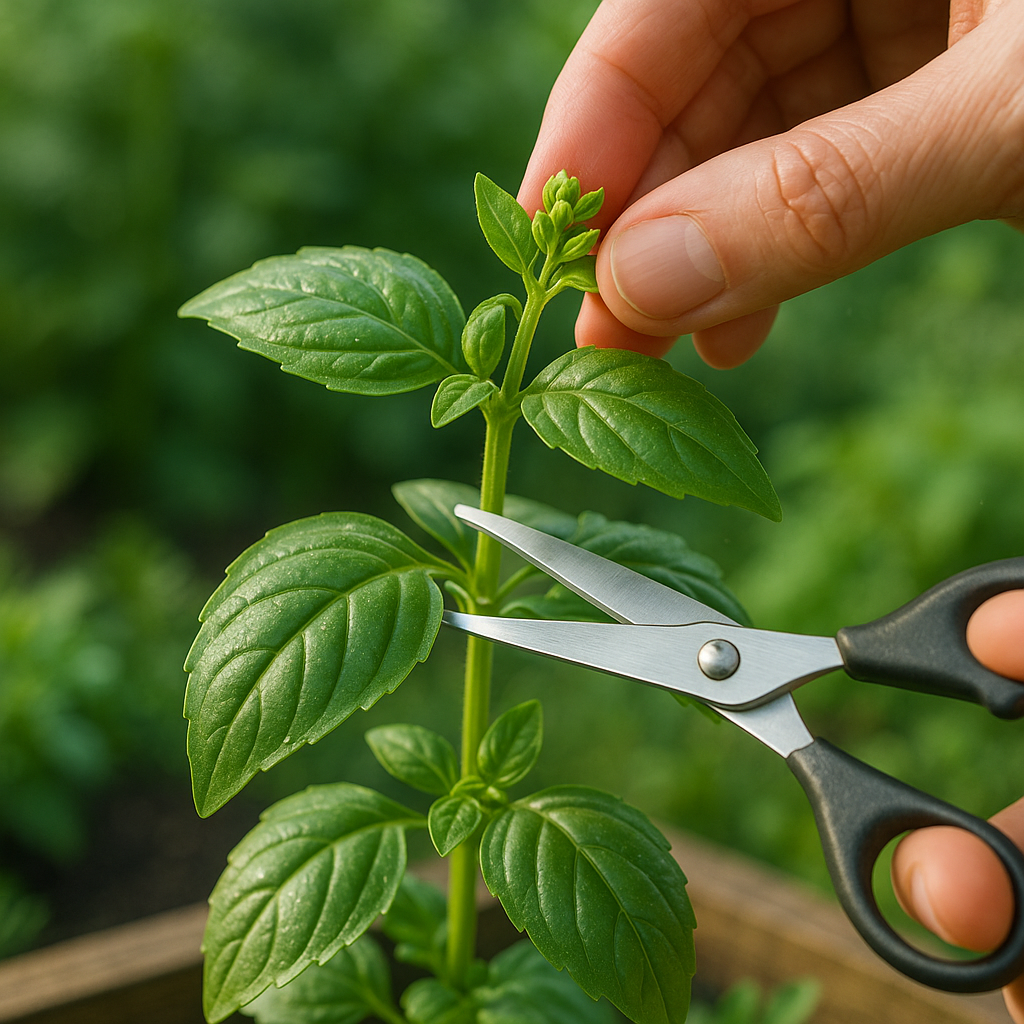
Pruning basil properly is key to encouraging a bushy, healthy plant that produces flavorful leaves all season long. Start by waiting until your basil has at least six sets of true leaves; this ensures the plant is strong enough to handle pruning.
Look for the main stem and sets of two small leaves growing opposite each other—these are called leaf nodes. For bushier growth, use clean, sharp scissors and make your cut about a quarter-inch above a leaf node, ideally just above where the two small leaves emerge. This spot is easy to spot—look for a V-shape in the stem with little new leaves nestled in the joint.
Cutting here signals the plant to send out new side shoots from that node, rather than growing tall and leggy. Avoid cutting too close to the soil or removing more than one-third of the plant during any pruning session, as taking off too much stresses the basil and can stunt its growth.
As basil matures, you may notice small flower buds forming at the tips. To maintain the best leaf production, pinch these buds off right away using your fingers or scissors. Letting basil flower makes the leaves taste bitter and slows new growth.
As you get used to pruning, harvest a few stems at a time each week, always making cuts just above leaf nodes and rotating around the plant so all areas grow evenly. Regular pruning not only keeps your basil lush but also provides a steady supply for pesto, salads, or garnishes throughout the summer.
Remember, well-timed and careful snips are the secret to a thriving basil harvest!
Common Mistakes and How to Avoid Them
Many gardeners make the mistake of over-pruning basil, thinking that more cutting means healthier growth. However, removing too many leaves at once can actually stress the plant and stunt its development. Instead, aim to pinch off just a few leaves or stems at a time, focusing on the upper parts to encourage bushier growth.
Another frequent error is cutting basil stems too close to the base or below a leaf node, which can leave the plant bare and slow down its ability to recover. Always cut just above a set of healthy leaves or nodes; this helps new branches sprout quickly.
Letting basil flower is another common pitfall. While the tiny blooms are pretty, once basil flowers, the leaves often become bitter and the plant’s energy shifts from growing foliage to producing seeds. To avoid this, regularly check the tops for flower buds and pinch them off as soon as they appear.
If you’ve let your basil flower or cut too aggressively, don’t panic. Trim off all blooms and encourage new leaf growth with lighter, more frequent pinching. With gentle, regular maintenance rather than drastic cutting, your basil will stay healthy, lush, and flavorful throughout the growing season.
Caring for Basil After Pruning
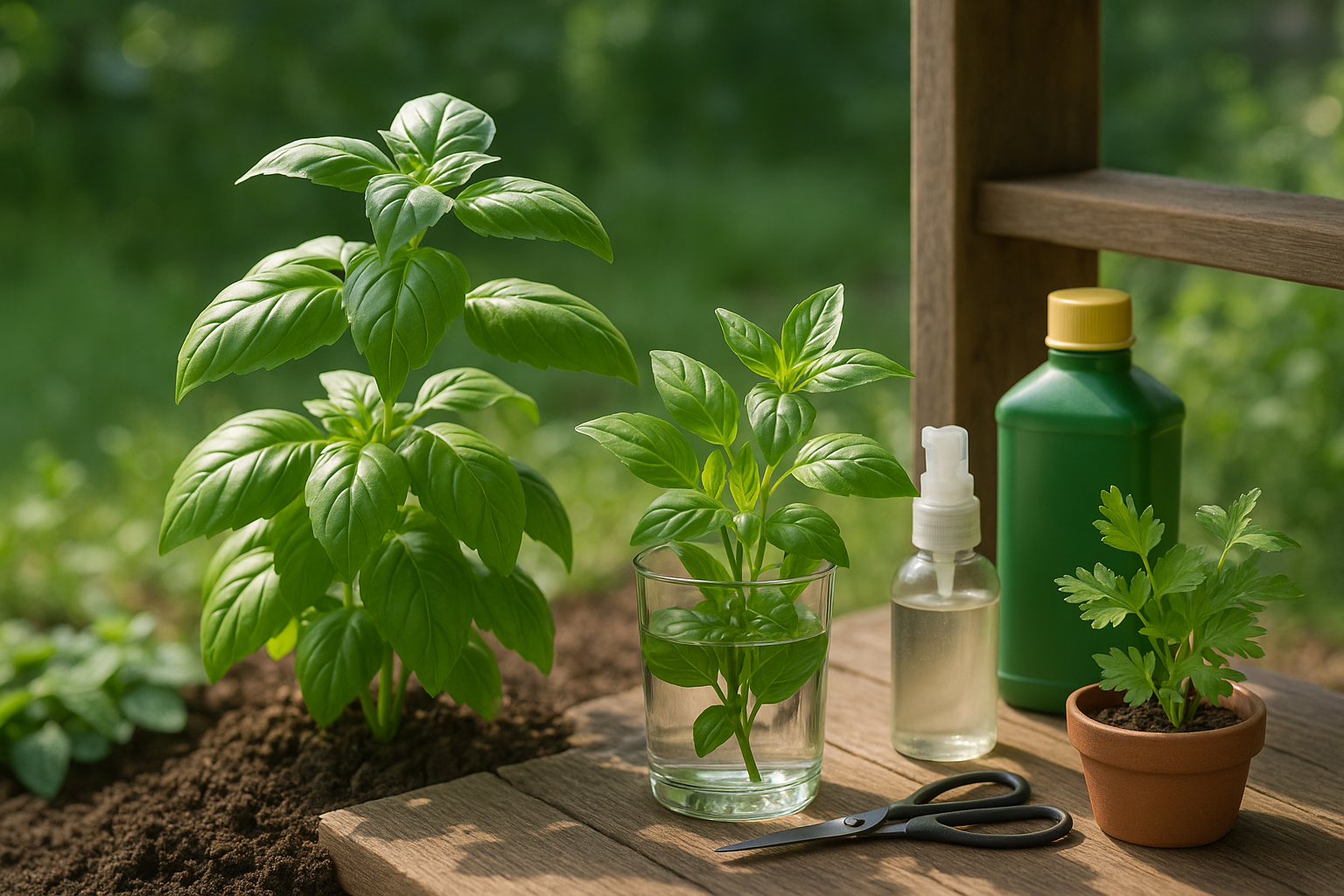
After pruning your basil, proper care will keep your plant healthy and ensure it produces fresh leaves for months to come. Start by watering the basil thoroughly right after pruning. Moist—but not soggy—soil helps minimize transplant shock and supports new growth. Water in the morning so the leaves have time to dry, which also helps prevent fungal diseases.
Feed your basil with a balanced liquid fertilizer every two to four weeks to provide the nutrients it needs to bounce back stronger. Keep a close eye on your basil as new shoots appear; healthy basil should produce bright green, lush leaves within a week or two.
Pruning opens up your plant, so it’s a good time to check leaves and stems for common pests like aphids or whiteflies, and remove any spotted or yellow leaves to prevent disease from spreading.
For extra basil sprigs, harvest them with clean scissors and rinse under cool water. Store them in a glass of water like a bouquet for up to a week, or wrap them loosely in damp paper towels and keep them in your fridge. If you have a big harvest, consider freezing chopped basil in olive oil using an ice cube tray—perfect for quick use in cooking all year round.
Wrapping Up
Pruning your basil plants may seem like a small step, but it truly pays off in the long run. Regularly trimming your basil not only encourages bushier growth but also keeps the plant healthier and less prone to disease. This means you’ll enjoy a steady supply of vibrant, flavorful leaves from spring through fall—perfect for tossing in salads, sauces, or homemade pesto.
Even if you’re new to gardening, don’t worry: start slow, snip above a pair of leaves, and watch your plant thrive week after week. Many gardeners are surprised by how quickly pruned basil rebounds with abundant new growth. Don’t hesitate to jump in and give it a try, and remember, your hands-on experience is the best teacher.
If you have questions or want to share your basil success stories, drop a comment below—we’d love to hear how your garden grows!
